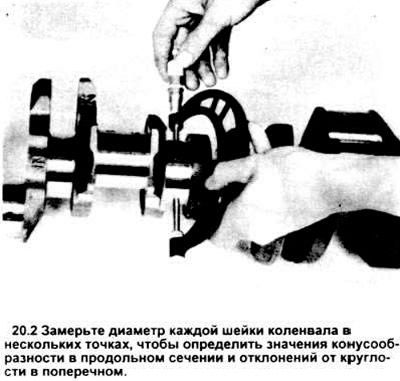2. Measure the diameters of the main and connecting rod bearings with a micrometer, compare the results with the specification data (see picture). By measuring the diameter at several points along the circumference of each neck, you can determine its deviation from steepness. The conicity of the neck is evaluated by the results of several measurements taken along its axis.

3. If the crankshaft journals under the bearing are damaged or have deviations from the steepness or taper above the allowable values, it is necessary to grind them. After restoring the crankshaft, use bearings with liners of the appropriate size.
Note: in engines of type 3.8LV6, finishing of the crankshaft journals is permissible by a value of not more than 0.254 mm (0.010 inch) from the nominal size. Large metal removal can lead to a decrease in strength and destruction of the crankshaft.
4. According to the recommendations given in section 21, check the main and connecting rod bearing assemblies.
Visitor comments